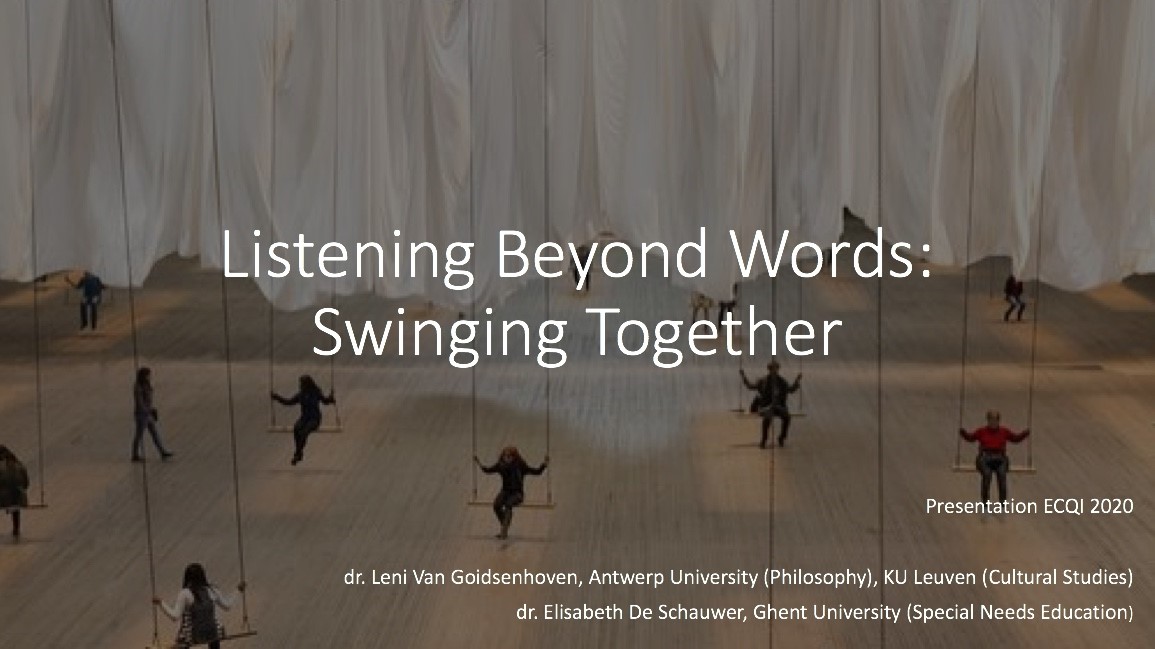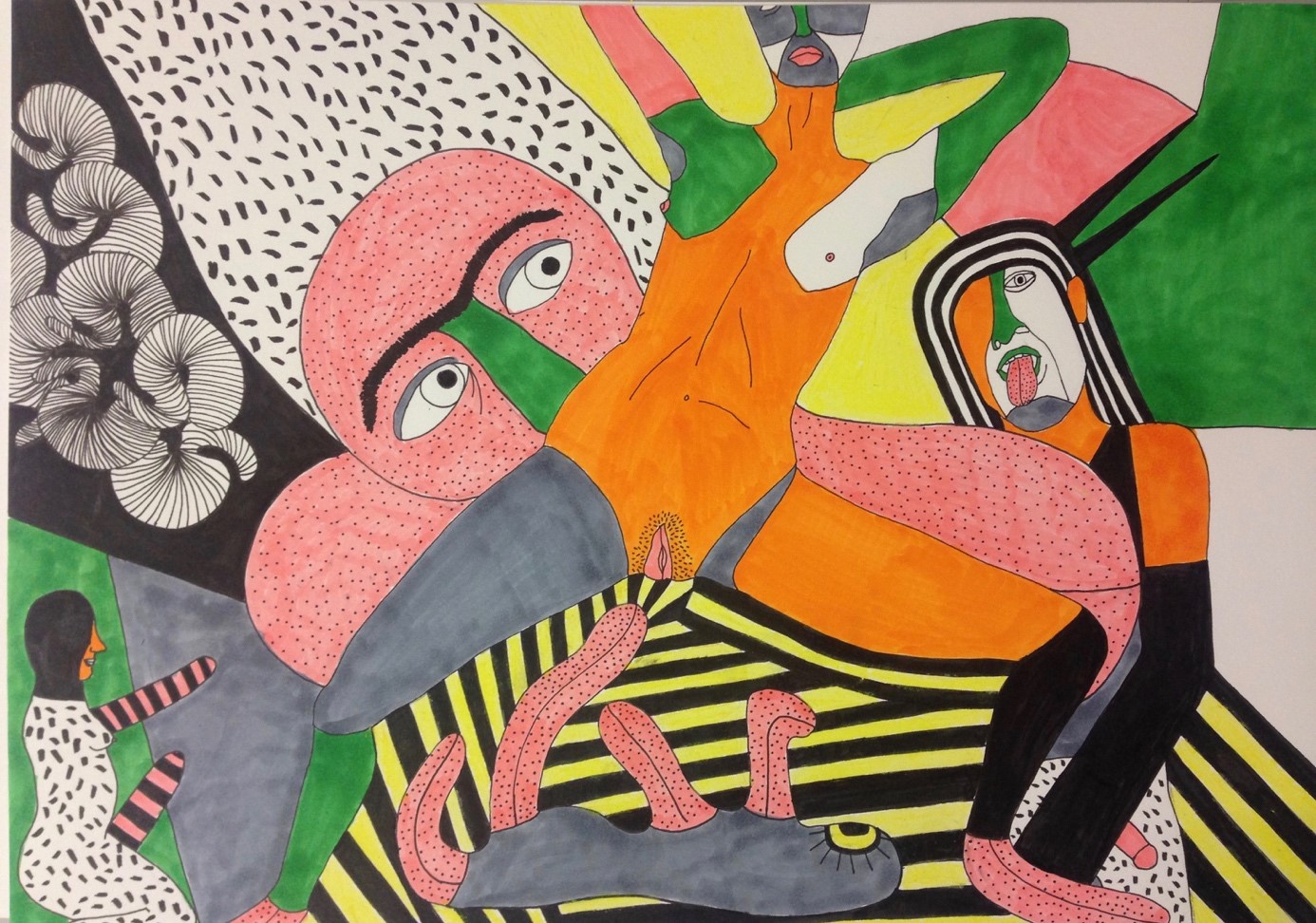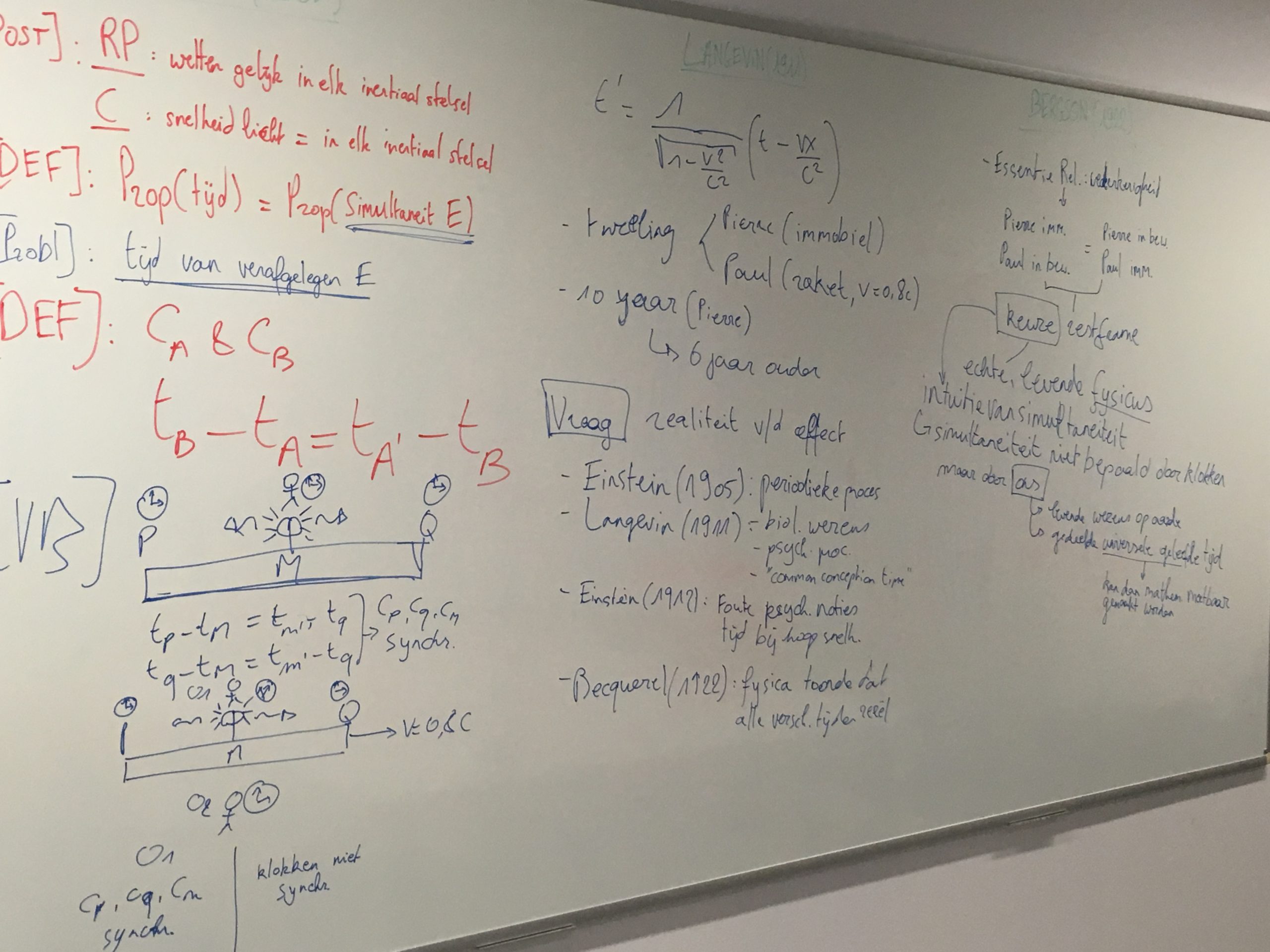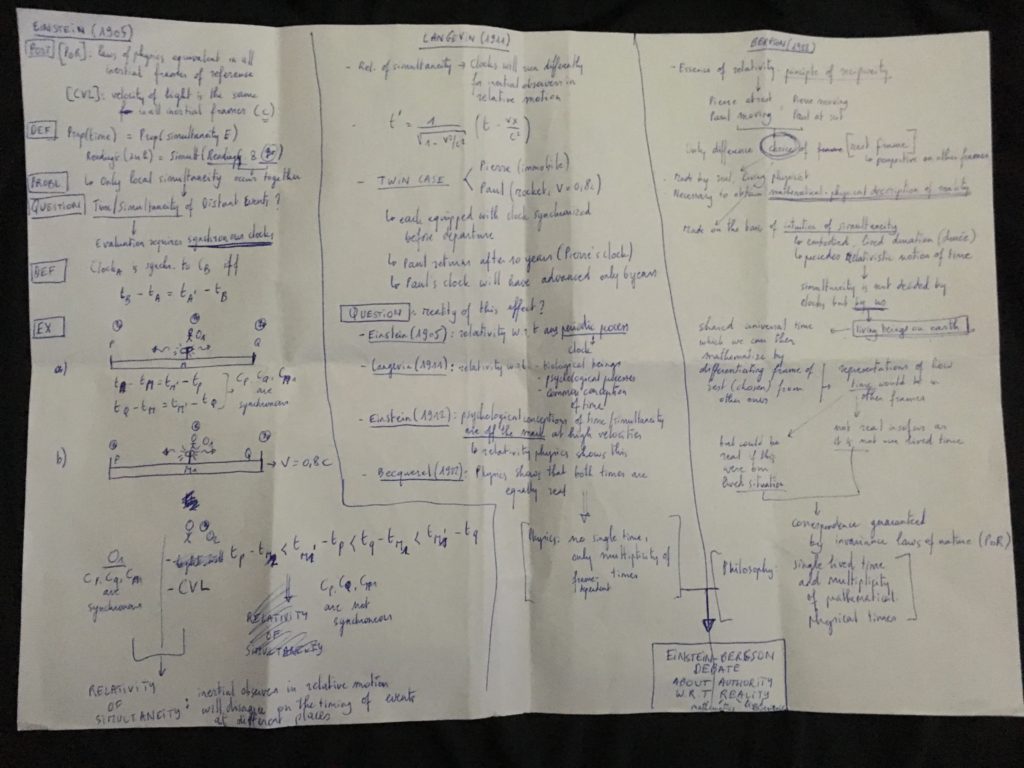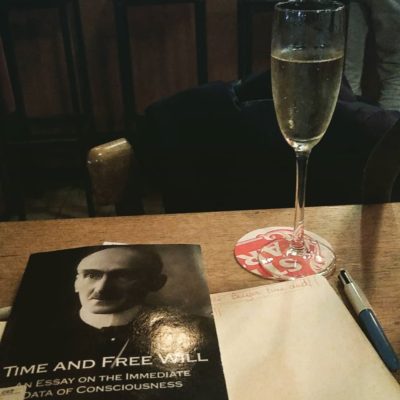Special Issue Guest Editors: Evelien Geerts, Josephine Hoegaerts, Kristien Hens, Daniel Blackie
The recent, and ongoing, COVID-19 pandemic has made explicit what many of us already knew: good health and able-bodiedness are fluid and uncertain states. We can only ever hold them precariously (Butler 2004; Scully 2014), as their value and definition are intrinsically unstable and intersectionally linked to situated intelligibility systems that attribute meaning to gender, race/ethnicity, sexual orientation, class, and many other lived identity categories and labels (Parker 2015). What it means to be dis/able(d) has changed radically over time—and is still changing—under the policing influence of normalcy-dictating medical-psychiatric discourses and neoliberal bio-/necropolitical regimes (Tremain 2006; Chen 2012), while simultaneously being positively impacted by grassroots intersectional disability justice activism (Mingus 2011; Piepzna-Samarasinha 2018), critical disability studies, and critical pedagogical frameworks.
The COVID-19 crisis has had a brutal impact on the world and its population, and specifically on those whose bodies were already constructed to matter less through the intertwined, negatively constructed binaries that uphold the exclusivist notion of the ‘pure’, ‘neutral’ and healthy human subject. At the same time, the crisis also has demonstrated the porosity of these oppositional boundaries, such as the boundaries drawn between the human, non-human, more-than-human, and the perpetually dehumanised, the personal/political, and the able/disabledbodied: The SARS-CoV-2 virus and the patchwork of crises it has created (and reinforced) does not only point at human identity and subjectivity being more in flux and in conjunction with (more-than-human) others than the Cartesian self tells us, but also demonstrates that the condition of vulnerability is an existentially shared one and therefore cannot be subsumed under one linear temporal framework. Long COVID, for instance, demonstrates how vulnerable we all are, in the end, and how the linear temporal framework backing up the (dis)abledness narrative needs to be urgently queered, and also placed in the context of longer histories of crisis, in which experiences of ill health, mutilation, and various dis/abilities have played an important role (Bourke 1996; Nair 2020). Another aspect that the pandemic crisis has underlined sharply, is the fact that both the experience of—and the care for—able and disabled bodies is an intrinsically gendered affair (Forestell 2006). These experiences are furthermore deeply bound up with equally gendered notions of labour, authority, and autonomy (Rose 2017); a topic that has been central to the discipline of gender studies from the outset.
Taking the foregoing into account, this special issue of Tijdschrift voor Genderstudies (Journal of Gender Studies), wishes to explore the intersections between complex lived experiences of dis/ability and gender through an explicit engagement with the links and tensions between the scholarly and activist fields of gender studies and critical disability studies (see e.g., Meekosha & Shuttleworth 2009) while taking stock of important present-day turns and debates in and at the intersections of both fields.
More concretely: What happens, this issue wonders, if we take the call—contested by scholars such as Bone (2017) but at the same time emphasised by Kafer (2013)—for ‘cripping’ scholarship, policy, and practice seriously in gender studies and feminism? What happens if we think beyond transdisciplinary exchange, and purposefully stretch towards a theoretical framework and grounded practice of dis/abling gender studies? How can the insights and methods of critical disability studies, with its radical turn toward vulnerability, diversity, and resilience push gender studies toward new understandings of identity, corporeal praxis, labour, and care? How can gender studies, and specifically, novel approaches within contemporary feminist theory, assist critical disability studies with the intersectional conceptualisation of specific lived experiences, surveillance and (in)visibility regimes, and a more affirmative understanding of identities-in-flux and (reappropriated) labels? In short, can we not only ‘gender’ disability (Smith & Hutchinson, 2004), but also dis/able gender?
We particularly welcome submissions that address the following questions and issues:
- The challenges and rewards of interdisciplinary dialogue between gender studies and critical disability studies;
- Intersections of gender, dis/ability, and ethnicity/race from a theoretical and/or experiential perspective (e.g., Samuels 2011).
- How to study dis/abilities on both an experiential and representational level;
- Changes in philosophical, historical (Stiker 1999), and sociological (e.g., Thomas 2007) models of dis/ability;
- New materialist, posthumanist, and affective theoretical approaches (e.g., Goodley et al. 2014; Feely 2016);
- Changes in terminology within gender studies and critical disability studies (e.g., ‘crip’ as a reappropriated term);
- ‘Bodies that are made to (not) matter’, for example in the context of health crises;
- The potential of historical studies to generate new theoretical insights on dis/ability and gender (e.g., Rembis 2019);
- (Neoliberal) academic spaces, ablebodiedness, normativity and critical pedagogical approaches (including neurodiversity & neurotypicality)
- Dis/ability and the questions of labour and care (i.e., who is supposed to request accommodations; provide care; …)
- Links and tensions between the women’s and disability rights movements, and the role of activism in practices of dis/abling gender (‘everyday activism’)
References used:
- Bone, K. (2017). Trapped Behind the Glass: Crip theory and Disability Identity. Disability & Society 32(9).
- Bourke, J. (1996). Dismembering the Male: Men’s Bodies, Britain and the Great War. The University of Chicago Press.
- Butler, J. (2004). Precarious life: The Powers of Mourning and Violence. Verso.
- Chen, M. Y. (2012). Animacies: Biopolitics, Racial Mattering, and Queer Affect. Durham University Press.
- Goodley, D., R. Lawthom, and K. Runswick Cole (2014). Posthuman Disability Studies. Subjectivity 7 (4).
- Feely, M. (2016). Disability Studies After the Ontological Turn: A Return to the Material World and Material Bodies Without a Return to Essentialism. Disability & Society 31(7).
- Forestell, Nancy M. (2006). ‘And I Feel Like I’m Dying from Mining for Gold’: Disability, Gender, and the Mining Community, 1920-1950. Labor: Studies in Working-Class History of the Americas 3(3).
- Kafer, A. (2013). Feminist, Queer, Crip. Indiana University Press.
- Mingus, M. (2011, February 12). Changing the Framework: Disability Justice: How Our Communities Can Move Beyond Access To Wholeness. Leaving Evidence. https://leavingevidence.wordpress.com/2011/02/12/changing-the-framework-disability-justice/.
- Nair, A. (2020). ‘These Curly-Bearded, Olive-Skinned Warriors’: Medicine, Prosthetics, Rehabilitation and the Disabled Sepoy in the First World War, 1914-1920. Social History of Medicine 33 (3).
- Parker, A. M. (2015). Intersecting Histories of Gender, Race, and Disability. Journal of Women’s History 27 (1).
- Piepzna-Samarasinha, L. L. (2018). Care Work: Dreaming Disability Justice. Arsenal Pulp Press.
- Meekosha, H., and R. Shuttleworth (2009). What’s so ‘Critical’ about Critical Disability Studies? Australian Journal of Human Rights 15 (1).
- Rembis, M. (2019). Challenging the Impairment/Disability Divide: Disability History and the Social Model of Disability. In: N. Watson and S. Vehmas (eds). The Routledge Handbook of Disability Studies, 2nd Edition. Routledge.
- Rose, S. F. (2017). No Right to be Idle: The Invention of Disability, 1840s-1930s. The University of North Carolina Press.
- Scully, J. L. (2014). Disability and Vulnerability: On Bodies, Dependence, and Power. In: C. Mackenzie, W. Rogers, and S. Dodds (eds.). Vulnerability: New Essays in Ethics and Feminist Philosophy. Oxford University Press.
- Samuels, E. (2011). Examining Millie and Christine McKoy: Where Enslavement and Enfreakment Meet. Signs 37 (1).
- Smith, B. and B. Hutchinson (eds) (2004). Gendering Disability. Rutgers University Press.
- Stiker, H. J. (1999). A History of Disability. University of Michigan Press.
- Thomas, C. (2007). Sociologies of Disability and Illness: Contested Ideas in Disability Studies and Medical Sociology. Palgrave Macmillan
- Tremain, S. (ed.). (2006). Foucault and the Government of Disability. The University of Michigan Press.
About the Journal:
Tijdschrift voor Genderstudies (Journal of Gender Studies) is a Dutch and English language forum for the scientific problematisation of gender in relation to ethnicity, sexuality, class, and age. The journal aims to contribute to debates about gender and diversity in the Netherlands and Flanders. The journal is an interdisciplinary medium operating at the intersection of society, culture, the humanities, health, and science.
Tijdschrift voor Genderstudies (The Journal of Gender Studies) is published by Amsterdam University Press: Tijdschrift voor Genderstudies | Amsterdam University Press (aup.nl)
Guest editors:
Evelien Geerts, University of Birmingham, e.m.l.geerts@bham.ac.uk
Josephine Hoegaerts, University of Helsinki, josephine.hoegaerts@helsinki.fi
Kristien Hens, University of Antwerp, kristien.hens@uantwerpen.be
Daniel Blackie, University of Helsinki, daniel.blackie@helsinki.fi
Preparing your submission:
We invite potential contributors to submit an abstract of 500 words by the 1st of May 2021. The final paper should be 6000 words maximum. Abstracts for traditional scholarly articles should outline the theoretical/praxis-related contribution, method of analysis, and a selection of references (the latter do not have to be included in the word count). Suggestions for non-traditional, critically, and scholarly informed contributions are welcome as well. Please include the contact details of all of the contributors on the abstract document. Abstracts (and manuscripts) can be written in English or Dutch. Please note that the initial acceptance of an abstract does not guarantee publication and that the manuscripts will undergo a double-blind review process. We strive toward diversity among our contributors in terms of career-stage, disciplines, self-identification, and scholarly or activist affiliation. We are happy to accommodate different accessibility needs or diverse styles of communication. Please get in touch with (one of) the editors for any of these issues.
The author(s) should email their abstract proposal as a Word file to all of the guest editors: e.m.l.geerts@bham.ac.uk, josephine.hoegaerts@helsinki.fi, kristien.hens@uantwerpen.be , daniel.blackie@helsinki.fi. For specific questions or more information, contact the guest editors.
Submission timeline:
May, 1, 2021: Abstract submission deadline.
May, 14, 2021: Notification of acceptance/rejection and feedback from the guest editors for accepted abstracts.
August, 14, 2021: Manuscript submission deadline.
August, 14, 2021 – September 14, 2021: Double-blind review process plus feedback from the guest editors.
October, 14, 2021: Full and finalized manuscript submission deadline.


